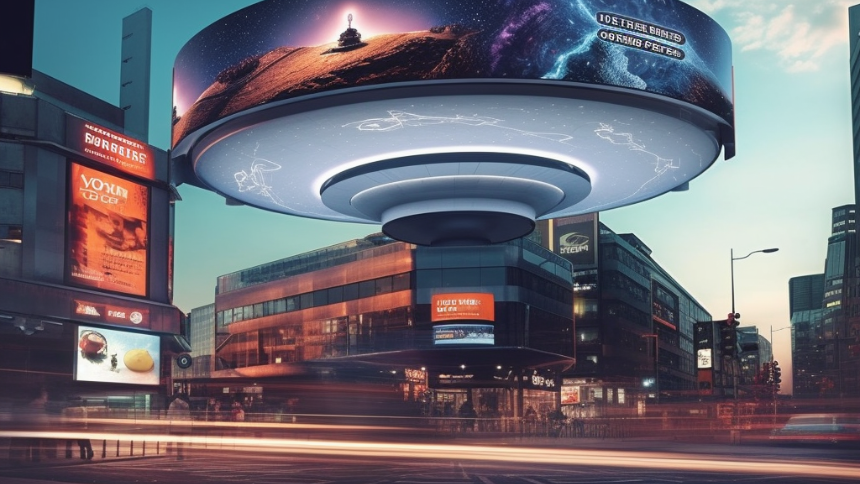Maximizing Your Digital Marketing Budget
Digital marketing can quickly become costly, especially for small businesses. To help you get the most out of your digital marketing budget, here are five tips to consider:
Set clear goals:
Before starting any digital marketing campaign, it’s essential to set clear goals. Identify what you want to achieve and the metrics you will use to measure success.
Focus on your target audience:
To maximize your digital marketing budget, you need to ensure that your message is reaching the right people. Identify your target audience and tailor your campaigns to appeal to their specific interests and needs.
Invest in social media:
Social media platforms are an excellent way to reach a large audience at a low cost. By investing in social media advertising, you can target specific demographics, increase brand awareness and generate leads.
Create valuable content:
High-quality content is the cornerstone of any successful digital marketing campaign. By creating valuable and informative content, you can establish your brand as a thought leader in your industry, increase website traffic and generate leads.
Analyze and optimize:
It’s essential to analyze the results of your digital marketing campaigns continually. By tracking metrics such as website traffic, conversion rates and social media engagement, you can identify what’s working and what’s not, and optimize your campaigns accordingly.
By following these tips, you can maximize your digital marketing budget and achieve better results with less money spent.
10 SEO Tips to Boost Your Website
In today’s digital landscape, having a strong search engine presence is crucial for any business.
Here are 10 essential SEO tips to boost your website’s search engine rankings:
- Keyword research: Identify and target the right keywords relevant to your business and audience. Use tools like Google Keyword Planner or SEMrush to find the most effective keywords.
- On-page optimization: Optimize your website’s content by including targeted keywords in the title, headings, meta description, and within the body of the text. Make sure to maintain a natural flow and avoid keyword stuffing.
- Quality content: Create engaging, informative, and well-structured content that provides value to your audience. High-quality content is more likely to be shared and linked to, improving your search engine rankings.
- Mobile optimization: Ensure your website is responsive and mobile-friendly, as Google prioritizes mobile-optimized sites in search results.
- Site speed: Improve your website’s load time by compressing images, minifying code, and using a content delivery network (CDN). Faster websites rank higher in search results.
- Internal linking: Link to relevant pages within your website to improve user experience and help search engines understand your site’s structure.
- Backlinks: Earn high-quality backlinks from authoritative websites to establish your site’s credibility and improve its search engine ranking.
- Social media: Promote your content on social media platforms to increase visibility and attract more visitors to your website.
- Technical SEO: Address technical issues such as broken links, 404 errors, and duplicate content. Use tools like Google Search Console to identify and fix these issues.
- Track and analyze: Regularly monitor your website’s performance using tools like Google Analytics. Analyze the data to identify areas for improvement and adjust your SEO strategy accordingly.
Incorporating these 10 essential SEO tips will significantly improve your website’s search engine rankings. If you’re looking for professional assistance to further optimize your site and drive even more organic traffic, don’t hesitate to contact our web agency.
Get in touch with us today for a free consultation and let’s elevate your digital presence together!
The Ultimate Social Media Cheat Sheet: Image Sizes and Tips
Are you tired of constantly searching for the right size for your social media images? Don’t worry; we’ve got you covered with our ultimate social media cheat sheet. We’ve compiled the most common social media image sizes and included some helpful tips to make your images stand out.
A professional networking platform where users create profiles and connect with other professionals, join groups and follow companies in their industry. It is commonly used for job hunting, career development, and business networking.
Tips:
We recommend using high-quality head-shot or images to attract attention and your visual stand out. On your business banner, remember to include your tagline on the right to not overlap with your profile picture on the left.
- Square post: 1200px x 1200px.
- Article post: 2000px x 600px.
- Business profile banner: 1128px x 191px.
- Profile picture: 800px x 800px.
A social networking platform that allows users to create a profile, connect with friends, and share updates, photos, and videos. It has various features such as groups, business pages, and events, which allow users to interact with others who share similar interests.
Tips:
On your posts, use bright colours, a maximum of 20% text to grab attention and high-quality image that represents your brand’s personality and mission.
- Square post: 1080px x 1080px.
- Business cover: 1640px x 924px.
- Shared link post: 1200px x 630px.
- Profile picture: 1500px x 1500px.
A photo and video sharing platform where users can share their daily lives, hobbies, and interests through visual content. It has various features such as stories, reels, and IGTV, which allow users to create and share short-form videos. It is popular among influencers, celebrities, and businesses as a tool for marketing and brand building.
Tips:
Prioritize 50%+ of your content to engaging video and add music to grab attention. Use visually appealing and minimalistic images that highlight your brand’s products or services.
- Reels: 1080px x 1920px.
- Landscape post: 1080px x 566px.
- Portrait post: 1080px x 1350px.
- Profile picture: 320px x 320px.
- Square post: 1080px x 1080px.
TikTok
A short-form video sharing app where users can create and share videos set to music or audio clips. It has become popular for its algorithm-driven content discovery and the ability for users to create viral content quickly. It is primarily used for entertainment and has become a platform for influencers and brands to reach younger audiences.
Tips:
To boost your account authority, stay ahead with the current trends, use the right hashtags and keep your videos short and snappy.
- Portrait post: 1080px x 1920px.
- Profile picture: 200px x 200px.
A microblogging platform where users can share short messages, known as tweets, with their followers. It is commonly used for real-time news updates, commentary, and conversation on various topics. It is popular among journalists, politicians, and celebrities for its ability to quickly disseminate information to a large audience.
Tips:
Limit to 1-2 hashtags per Tweet, be conversational, keep your copy short and sweet and use images, GIFs, and/or videos whenever possible. Remember also to include your tagline on the right of your banner.
- Post: 1600px x 900px.
- Profile picture: 400px x 400px.
- Header: 1500px x 500px.
Youtube
A video sharing platform where users can upload, watch, and share videos on a wide range of topics. It is used for entertainment, education, and information sharing, and has become a popular platform for content creators to build a following and monetize their content.
Tips:
Use a visually appealing image that represents your brand’s mission and includes your brand’s tagline.
- Business cover banner: 2560 × 1440 px.
- Profile picture: 800px x 800px.
With this social media cheat sheet, you can create visually appealing images that accurately represent your brand on all social media platforms. Remember to use high-quality images, minimal text, and brand-specific colours to create a consistent brand image across all platforms.
From Groovy to Lit: The Evolution of Slang Words Across Generations
Slang words are a staple in modern language, but they are constantly evolving, especially across different generations. What was once considered cool and hip in the past is now outdated and even cringe-worthy. In this article, we’ll take a closer look at how slang words have evolved across generations and how brands can integrate them into their marketing strategies.
Slang Words Across Generations
Each generation has its own unique set of slang words that reflect its culture and experiences. For example, baby boomers used phrases like « groovy » and « far out » in the 1960s and 1970s, while Generation X popularized words like « rad » and « totally » in the 1980s and 1990s. Millennials, on the other hand, introduced words like « lit » and « on fleek » in the 2010s, while Gen Z has popularized terms like « stan » and « cancel » in recent years.
Brands that understand and integrate the latest slang words into their marketing strategies connect with their target audience in a more meaningful and authentic way.
Integrating Slang Words into Marketing Strategies
When it comes to integrating slang words into marketing strategies, it’s important to consider the target audience. For example, if a brand is targeting baby boomers, using phrases like « groovy » and « far out » may resonate with them. However, if a brand is targeting Gen Z, using terms like « dank » and “glow up » may be more effective.
Integration tips:
- Understand the target audience and the slang words they use.
- Use slang words in a natural and authentic way. Forced or awkward usage can backfire and make the brand seem out of touch.
- Stay up-to-date on the latest slang words and trends. Slang words are constantly evolving, so it’s important to stay current.
- Avoid using slang words that may be offensive or insensitive. Some slang words have negative connotations, so it’s important to be aware of their meanings and contexts.
- Test and measure the effectiveness of using slang words in marketing campaigns. This will help brands determine which words resonate with their target audience and which ones don’t.
Slang words are a dynamic aspect of language that evolves with each generation. Brands that understand and integrate the latest slang words into their marketing strategies can connect with their target audience in a more meaningful and authentic way.
Boost Your Website Loading Speed in 2023: Top Tips to Follow
A slow-loading website can be frustrating for users, leading to high bounce rates and low conversions. Optimizing your website’s loading speed is crucial to keep your audience engaged and ensure that they have a seamless user experience. Here are some top tips to follow in 2023:
Use a Content Delivery Network (CDN)
A Content Delivery Network (CDN) is a network of servers located in different regions worldwide that can distribute your website’s content to users. By using a CDN, your website’s content can be delivered from the nearest server to the user, reducing the time it takes for the website to load.
Optimize Your Images
Images are an important aspect of a website, but they can also slow down the loading speed. Optimize your images by compressing them without affecting their quality. This can significantly reduce their size and speed up your website.
Minimize HTTP Requests
HTTP requests refer to the number of times your website sends a request to the server to load a particular file. Minimizing HTTP requests can speed up your website’s loading time. To minimize HTTP requests, consider reducing the number of plugins and scripts on your website.
Use Caching
Caching is a process of storing frequently accessed data on the user’s device, allowing the website to load faster. By using caching, your website can avoid making multiple server requests, leading to faster loading times.
Upgrade Your Hosting Plan
Choosing a reliable web host that offers fast loading speeds is crucial for optimizing your website. Consider upgrading your hosting plan to ensure that your site is hosted on a fast and reliable server.
By following these tips, you can enhance your website’s loading speed, improve user experience, and boost your website’s performance. Regularly monitoring your website’s loading speed and making changes accordingly can help you stay ahead of the competition.
The Future of Branding in a Digital World
The future of branding is becoming increasingly digital. Here are a few trends and predictions for what’s next in the world of digital branding:
1. Personalization:
As consumers become more accustomed to personalized experiences, brands will need to find new and innovative ways to tailor their messaging and offerings to individual customers.
2. Augmented Reality:
With the rise of AR technology, brands will have new opportunities to create immersive and interactive experiences that blur the lines between the physical and digital worlds.
3. Voice Search:
As more consumers rely on voice assistants like Siri and Alexa, brands will need to optimize their content and messaging for voice search queries.
4. Artificial Intelligence:
As AI technology continues to advance, brands will be able to leverage data and analytics to deliver highly targeted and personalized messaging and experiences to customers.
At our digital marketing agency, we stay on the cutting edge of emerging trends and technologies in digital branding. If you’re looking to future-proof your branding strategy and stay ahead of the curve, contact us today to learn how we can help.
Let us help you build a brand that’s ready for whatever the future holds.





